How Does Your Body Clock Work?
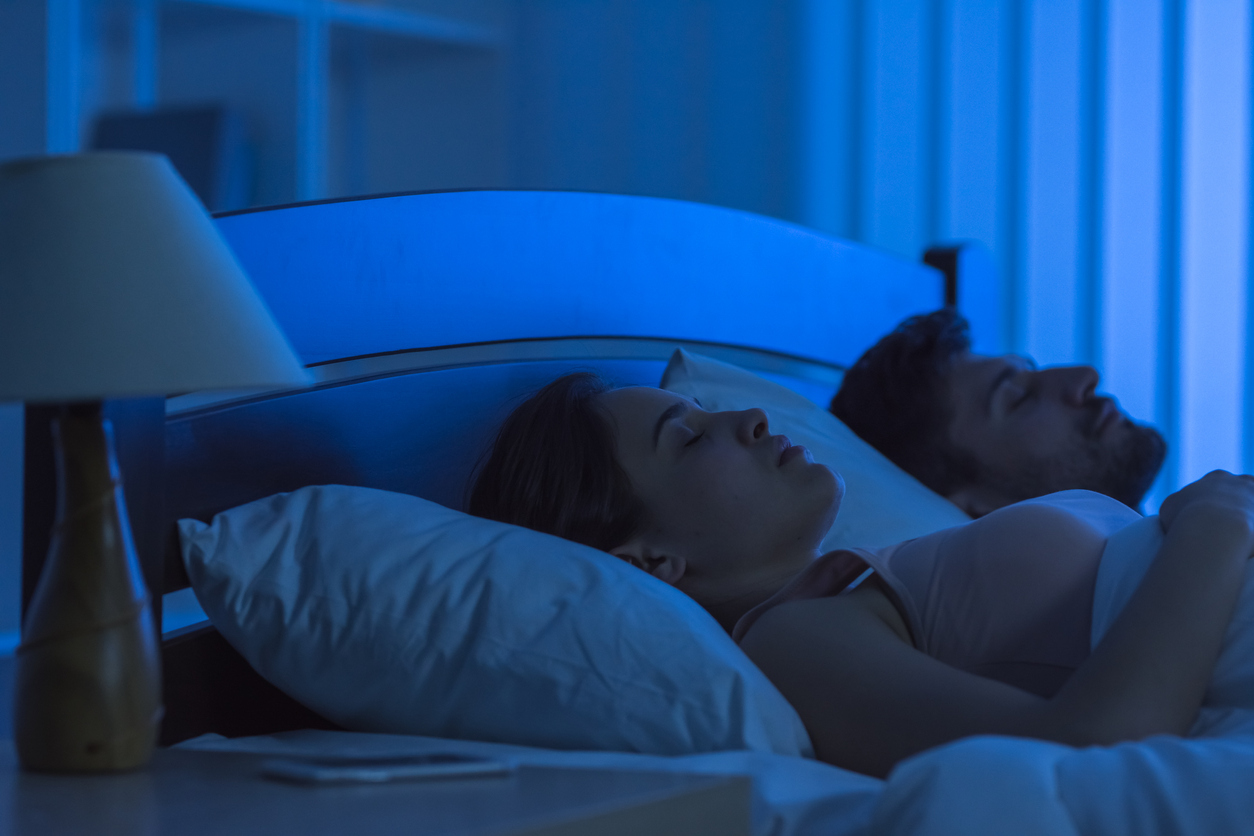
What are Circadian Rhythms?
How does your body know what time it is? Did you know that every living organ and every cell in your body has a 24-hour body clock? Can some chronic conditions be prevented through healthy circadian habits? Welcome to the wonderfully complex and fascinating world of chronobiology, or the study of circadian rhythms.
Circadian rhythms are the daily patterns and changes in physical and behavioral processes that roughly follow a 24-hour cycle. These natural patterns are intricately tied to the planet’s light and dark cycle. For example, diurnal organisms (like humans) sleep at night and are active during the day, while nocturnal organisms have this pattern flipped – sleeping during the day and staying awake at night.
Almost every plant and animal has adapted to the planet’s 24-hour light and dark cycle through the circadian rhythm. These processes are fundamental to human health and deeply encoded in our DNA. In fact, the 2017 Nobel Prize in Physiology or Medicine was jointly awarded to 3 chronobiologists who, in 1984, discovered a gene in fruit flies that was responsible for regulating the circadian body clock through a protein known as PERIOD, which accumulates in cells at night and degrades during the day.
It has even been theorized that if humans were to be moved to another planet with near-identical conditions to earth, but with a day-night cycle that is different than our 24-hours, life would have great difficulty surviving.
What is The Biological Body Clock and Master Timekeeper?
The cycles of the circadian rhythm are controlled by a widespread and interconnected system of timekeepers throughout the body, known as biological clocks. These biological clocks are present in every single organ and tissue in the body. To help keep all clocks ‚on time‘ and in check, these countless biological clocks are synchronized by a master timekeeper, or master body clock.
In humans and other vertebrates, this master timekeeper is rooted deep within the brain, in a tiny structure the size of a mustard seed known as the suprachiasmatic nucleus, or SCN. The SCN is also responsible for signaling to the brain that it should release the hormone melatonin, which helps to prepare the body for sleep in response to darkness.
In order to synchronize the circadian rhythm, the master timekeeping SCN relies on both internal cues (such as the PERIOD protein described earlier, discovered by the 2017 Nobel Prize winners) and external cues outside of the body.
These external cues, known as Zeitgebers (German for „givers of time“) include light, temperature, eating, physical activity, and even noise. Light, however, is the strongest external cue that influences the circadian rhythm.
It’s one of the many reasons why bright lights too close to bedtime trick our brain into thinking it’s daytime (by suppressing the release of melatonin), often keeping us alert and delaying the amount of time it takes to fall asleep. On the flip side, bright light in the morning hours signals to our brain that it’s daytime which helps to wake us up, increasing alertness and even productivity.
Cave Man: The Impact of Darkness on Circadian Rhythms
What happens if we’re deprived of external cues? Do the internal cues kick into overdrive and set a consistent sleep-wake cycle?
This is exactly what French cave explorer and chronobiologist Michel Siffre sought to understand. In 1962, Siffre started a series of where he would spend long periods of time living in an underground bunker deep within a cave. With no daylight, clocks, or radios to provide his brain with Zeitgebers, or external cues, he relied exclusively on internal, biological body clocks to synchronize when he slept and was active. His longest experiment took place in 1975, where he’d spend over 6 months in a Texan cave, attached to EEG’s to monitor his sleeping and waking brain activity. When he finally emerged from the cave, his groundbreaking experiments revealed that his body kept to a regular sleeping and wake cycle that lasted just over 24 hours (24.2 to be exact).
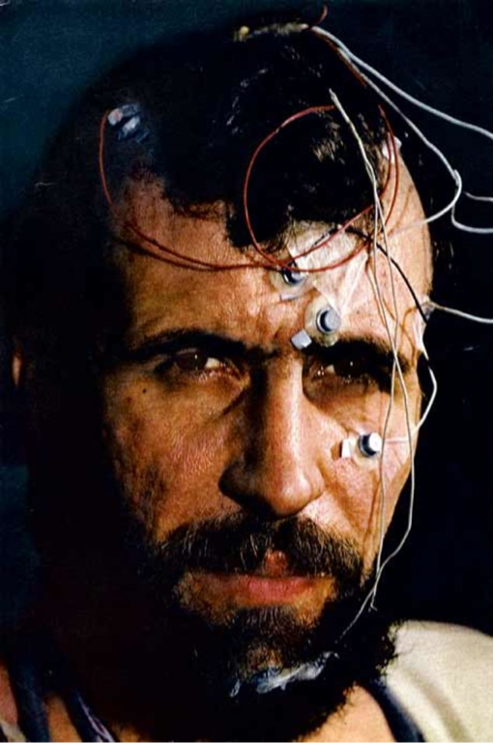
Even without the presence of external cues or Zeitgebers – a process known as a „free-running circadian rhythm“ – Siffre would fall asleep, wake up, and eat at approximately the same time every day.
While Siffre’s circadian rhythm remained relatively intact with predictable intervals of sleep-wake patterns, life in the lonely cave distorted his psychological perception of time. In one of Siffre’s experiments, he noted the warping of his psychological timing:
“I went down to the cave on July 16 and was planning to finish the experiment on September 14th. When my team on the surface notified me that the day had finally arrived, I thought it was only August 20 and I thought I still had a month to get out of the cave. My psychological time had been compressed for two.”
Siffre would continue these experiments into older age. During his final experiment in 1999, he found that his internal biological body clock ran slower at the age of 60 when compared to his earlier experiments when he was a young man. These results laid the foundation for decades of additional research into the impact of aging and disease on circadian rhythm functioning.
How Does the Circadian Rhythm Influence Sleep?
The circadian rhythm is one of two biological processes responsible for initiating sleep. The first is sleep homeostasis, commonly referred to as „sleep pressure“.
Sleep pressure is defined as our body’s drive for sleep that becomes exponentially higher the longer we stay awake. For example, if you’ve woken up after a quality night’s sleep your sleep pressure would be low – however, if you’ve pulled an all-nighter and haven’t slept for over 24-hours this pressure would be remarkably high.
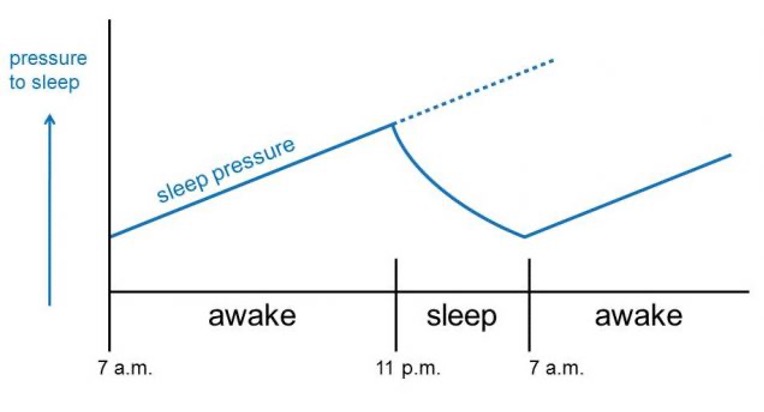
Just as our sleep is at the mercy of sleep pressure, the circadian rhythm also promotes sleepiness before bedtime and begins setting the physiological stage for wakefulness before we actually wake up. For example, as sleep pressure peaks before sleep, the peak in wakefulness from the circadian rhythm takes place a few hours before the average bedtime for a person and then reduces to promote sleepiness and prepare the body for the onset of sleep.
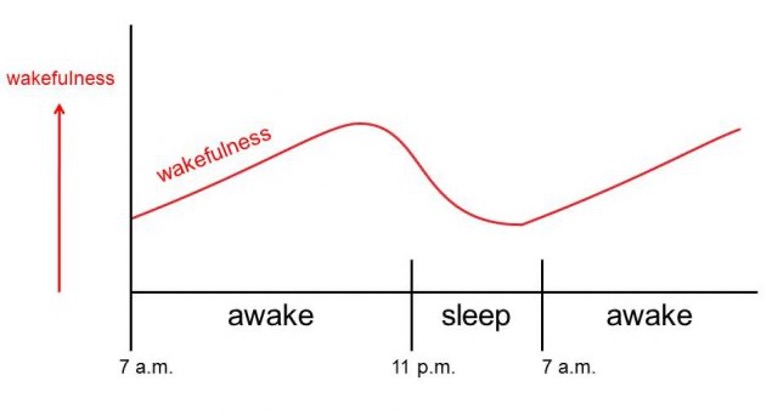
Together, sleep pressure and the circadian rhythm are synchronized to help support optimal sleep-wake patterns.
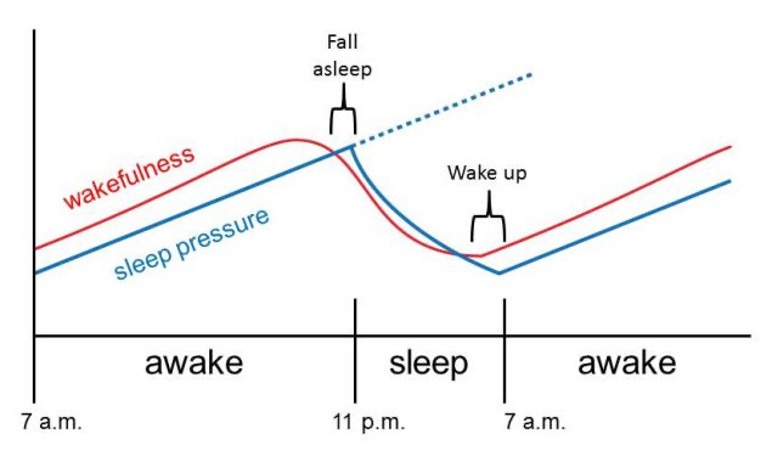
While sleep-wake cycles are the most obvious circadian rhythm in humans and other animals, other processes such as hormone production, internal core body temperature, and how our body’s process foods functions are also timed by our internal body clock.
Even primitive organisms such as plants also exhibit powerful circadian rhythms.
Take, for example, the daily rising and falling of leaf movements from plants that mirror the sun’s light and dark cycles – tracking the sun during the day and resetting their leaves at night, moving them toward the east as they anticipate the sunrise.
However, similar to humans, plants also have biological clocks that do not rely on external cues from the sun. For example, many plants open and close their leaves at the same times each day even when placed inside of a controlled environment with no light.

Scientists are also finding other, more sophisticated examples of circadian rhythms in plants. For example, researchers from Rice University have found that, in the same way they anticipate the sunrise, plants can also anticipate daytime raids by insects and use their internal body clocks to regulate the release of chemicals that disrupt insect’s digestion.
Consequences of Disrupted Circadian Rhythms
Today, researchers have started to unravel the many ways disrupted circadian rhythms and sleep-wake problems may increase the risk of disease and chronic conditions. For example, when there is misalignment or “desynchronization” between our internal body clocks and external cues, this can result in any of the following:
Remember to speak to your doctor if you suspect that you or someone you know may be suffering from a circadian rhythm disorder. If you’re interested in supporting your sleep-wake cycles and circadian rhythm, head over to our article covering 8 tips to fix & reset your sleep schedule!
SleepScore Labs Solutions
Download the free SleepScore App for insights and articles on how well you sleep, the quality and quantity of your sleep cycles, and sleep improvement progress with science-backed tips and insights. Download it for free from App Store and Google Play Store!
You can also visit the SleepScore Store for a wide range of sleep-promoting products carefully curated by SleepScore Labs’ team of researchers including lighting solutions, white noise machines, and more to support your sleep-wake schedule!
Sleep well!